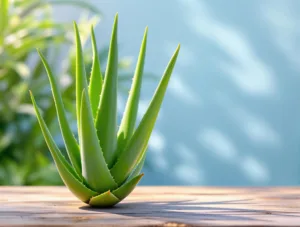Natural Remedies for Stretch Marks: Effective Ways to Improve Skin Elasticity and Appearance
Introduction
Stretch marks are a common skin concern affecting people of all ages, genders, and body types. These linear streaks, often appearing as reddish or purplish lines before fading to a silvery-white hue, occur when the skin stretches or shrinks rapidly, causing collagen and elastin fibers to rupture. Common causes include pregnancy, rapid weight gain or loss, puberty, and muscle growth from bodybuilding. While they pose no health risks, many seek ways to reduce their appearance for cosmetic reasons.
This comprehensive guide explores natural remedies to treat stretch marks, backed by scientific insights and traditional practices. From topical treatments to dietary adjustments and lifestyle changes, we’ll delve into proven methods to enhance skin elasticity and minimize the visibility of stretch marks.
Understanding Stretch Marks: Causes and Development
What Are Stretch Marks?
Stretch marks (striae) are a form of scarring that develops when the skin undergoes rapid stretching, disrupting the dermis—the middle layer responsible for skin elasticity. Initially, they may appear red or purple (striae rubra) due to blood vessels showing through the thin skin. Over time, they fade to a lighter shade (striae alba).
Common Causes
- Pregnancy (Striae Gravidarum) – Hormonal changes and abdominal expansion lead to stretch marks in 50-90% of pregnant women.
- Rapid Weight Fluctuations – Sudden weight gain or loss strains the skin.
- Puberty – Growth spurts can cause stretch marks on the hips, thighs, and back.
- Bodybuilding – Rapid muscle growth stretches the skin, particularly on the arms and shoulders.
- Genetics & Hormonal Factors – A family history of stretch marks or conditions like Cushing’s syndrome increases susceptibility.
Understanding these causes helps tailor prevention and treatment strategies effectively.
Natural Remedies to Reduce Stretch Marks
While complete removal is challenging, natural treatments can significantly improve texture and pigmentation. Below are the most effective methods.
1. Hydration and Moisturization
Keeping the skin hydrated enhances elasticity and repair.
- Aloe Vera – Soothes and promotes collagen production. Apply fresh gel directly, leave for 15 minutes, then rinse.
- Coconut Oil – Rich in fatty acids, it improves skin barrier function. Massage onto affected areas daily.
- Shea Butter & Cocoa Butter – Deeply moisturize and may reduce mark visibility over time.
2. Exfoliation for Skin Renewal
Gentle exfoliation removes dead skin cells, promoting regeneration.
- Sugar Scrub – Mix sugar with almond oil and lemon juice; gently scrub in circular motions.
- Oatmeal Scrub – Ground oatmeal with honey exfoliates and soothes inflamed skin.
3. Essential Oils and Carrier Oils
Certain oils boost collagen and improve skin texture.
- Rosehip Oil – High in vitamins A and C, known for scar reduction.
- Lavender & Frankincense Oil – Promote healing; dilute with a carrier oil before application.
- Castor Oil – Stimulates circulation and tissue repair. Apply with a warm compress for better absorption.
4. Nutrition for Skin Health
A diet rich in skin-supporting nutrients can prevent and reduce stretch marks.
- Vitamin C – Found in citrus fruits, it boosts collagen synthesis.
- Zinc – Supports skin repair (found in nuts, seeds, and legumes).
- Protein & Omega-3s – Essential for skin regeneration (fish, eggs, flaxseeds).
5. Staying Hydrated
Drinking adequate water maintains skin elasticity. Aim for at least 2 liters daily.
Lifestyle Adjustments for Prevention
1. Gradual Weight Management
Avoid yo-yo dieting; opt for steady weight changes to prevent skin stress.
2. Regular Exercise
Improves circulation and skin tone. Focus on strength training and stretching.
3. Sun Protection
UV exposure can worsen stretch marks. Use sunscreen on exposed areas.
When to Consider Medical Treatments
If natural remedies don’t yield desired results, professional treatments include:
- Microneedling – Stimulates collagen via tiny punctures.
- Laser Therapy – Targets pigmentation and promotes healing.
- Topical Retinoids – Prescription creams like tretinoin improve texture.
Conclusion: Embracing Skin Health Naturally
While stretch marks are a natural part of life, their appearance can be minimized through consistent care. Hydration, proper nutrition, and natural oils play a crucial role in improving skin elasticity. For best results, combine these methods with a healthy lifestyle and patience—since skin renewal takes time.
If stretch marks cause significant distress, consult a dermatologist for advanced treatments. Ultimately, embracing your skin’s journey fosters confidence, reminding us that imperfections are part of our unique stories.
Would you like additional recommendations tailored to specific skin types or conditions? Let us know in the comments!









Add comment